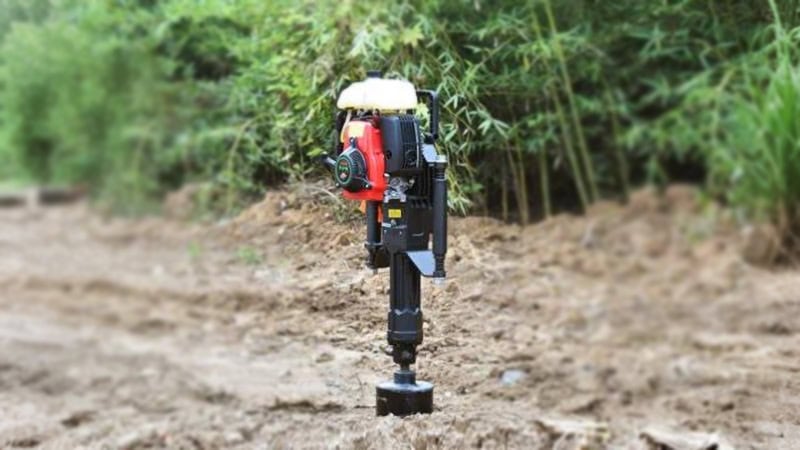
Key Takeaways
- Handheld and truck-mounted pile drivers serve different construction needs based on mobility, power, and site conditions.
- Truck-mounted pile drivers deliver higher impact force for repetitive large projects but require more setup and crew.
- Handheld pile drivers are portable, cost-effective, and ideal for smaller, dynamic projects.
- Everstar Machinery offers compact, low-maintenance models combining hydraulic hammer performance with easy operation.
- Always match your pile driver choice to terrain conditions, project scale, and crew capabilities for best results.
The modern construction market offers many types of pile drivers, from compact, mobile solutions to larger, truck-mounted designs. Choosing the right appliance isn’t just about maximum power; it’s about matching your equipment to the project’s size, soil conditions, crew capabilities, and site accessibility.
Two of the most common options are the handheld pile driver and the truck-mounted pile driver, each serving distinct roles in construction. This article will explore their performance, mobility, costs, and best use cases so you can make an informed choice.
At Everstar Machinery, we focus on high-performance compact pile drivers specially designed for global projects where mobility, efficiency, and ease of use matter most.
Understanding the Two Primary Pile Driver Classes
Pilings used in construction can be made of wood, solid steel, or tubular steel. These materials are selected based on the load requirements of the project and the characteristics of the soil.
Choosing the right pile driver involves more than just equipment preference—it requires matching the machine’s capabilities to the type of piling and the specific site conditions.
A handheld pile driver is a compact, portable solution managed by one or two operators, designed for fast deployment and minimal crew needs. In contrast, a truck-mounted pile driver is an integrated system attached to a vehicle, requiring larger teams, longer setup, and higher impact capacity.
These systems are capable of handling a wide range of pile materials, including steel, timber, and precast concrete. However, the mounting style directly influences how quickly the system can be run, the manpower needed, and overall site flexibility.
Everstar Machinery emphasizes lightweight, easy-to-operate appliances that adapt to tight, challenging job sites, helping contractors operate in land conditions and projects of varying scale with confidence.
What Is a Handheld Pile Driver?
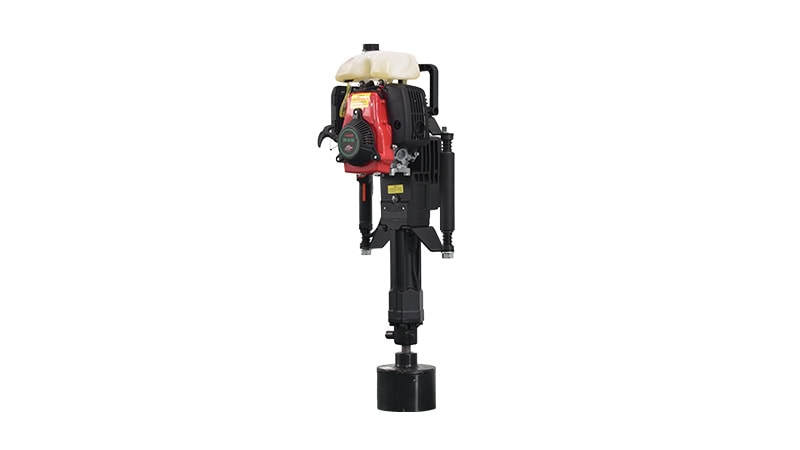
A handheld pile driver is a lightweight, operator-assisted tool for driving piles or posts into the ground without requiring a large crew or heavy equipment. These systems, supported by a compact power pack and hydraulic hammer, are ideal for fencing, solar farms, telecom anchor piles, and similar infrastructure.
Hydraulic impact pile hammers are capable of driving not only steel piles, but also timber and precast concrete piles. Additionally, hydraulic hammers are more environmentally acceptable than older, less efficient hammers for driving piles.
Their compact pile driver design allows them to quickly adapt to various land conditions, including timber piles, concrete piles, and even some steel piles where lighter posts are required. A clamp is used to securely hold the pile in place during driving, ensuring stability and proper force transfer.
Key benefits of this equipment include:
- Easy transportation
- Minimal site setup
- Reduced vertical vibrations for operator comfort
- Small crews (often just 1–2 people)
- Flexible positioning around tight job sites
Everstar’s handheld models emphasize operator safety, reduced vertical vibrations, and quick cycle times.
What Is a Truck-Mounted Pile Driver?
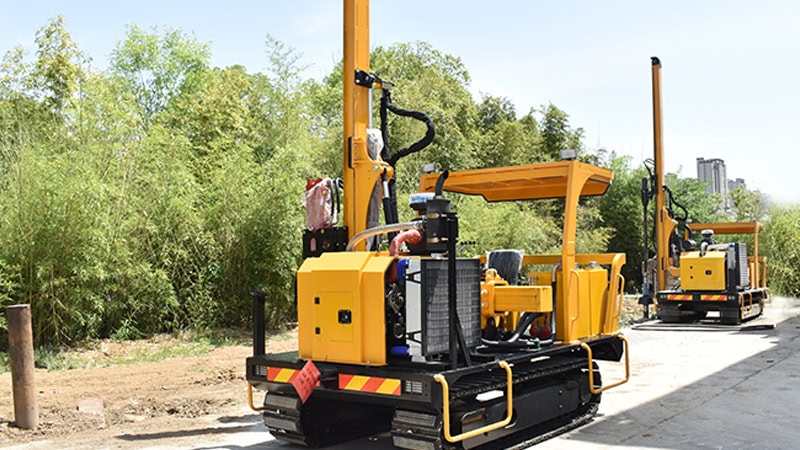
A truck-mounted pile driver integrates the pile driving system onto a dedicated vehicle chassis. These larger engines often rely on diesel hammer or hydraulic hammer systems to deliver high-impact force, driving piles to significant depths.
In these systems, a piston moves within a cylinder to generate the impact force needed to drive piles into the ground.
Truck-mounted pile drivers usually require a driver, rigging crew, and spotters to manage crane lifts and guide pile-driving hammers into position for steel piles and concrete piles alike. They stand for repetitive, high-volume pile driving on consistent, flat ground.
Truck-mounted systems are a common sight on large guardrail projects, highway expansions, and bridges.
Key benefits of this type of gear include:
- High-impact force suitable for concrete piles
- Efficient for repetitive, large-scale projects
- Integrated vehicle chassis device improves productivity tasks
Comparing Performance and Driving Capacity

When comparing other types of pile drivers, you must evaluate their driving force, cycle time, and achievable depth. The weight of the pile driver is a key factor in determining the impact force delivered to the pile, as it directly affects how much energy is transferred during the piling process.
These performance metrics are essential to understanding how well the equipment will handle your application, including driving steel piles in dense soils. Driving precision and consistency also differ depending on other structures and mounting types.
Everstar’s range of compact machines aims to balance excellent driving methods of performance with portability, ensuring contractors can operate effectively on variable sites without sacrificing quality or speed.
Understanding Force, Depth, and Application Limits
Performance differences between traditional pile drivers can be significant. Handheld machines generally deliver moderate impact energy for shorter pile lengths in softer soils. These machines operate by lifting and dropping a weight or piston to drive the pile into the ground.
Truck-mounted pile drivers, for example, equipped with mighty hydraulic hammer or diesel hammer setups, can drive longer piles, including sheet piles, into harder, denser soil layers, even reaching deep steel piles for large buildings and bridges.
Compact pile driver models from Everstar combine sufficient driving force with excellent portability, allowing you to drive piles for fencing, solar posts, or small to midscale buildings or concrete foundations.
How Terrain Type Affects Pile Driving Hammers Performance
Land conditions dramatically affect hammer efficiency. Soft terrain, with fewer obstacles, is ideal for handheld units. In contrast, hard or rocky ground often demands a truck-mounted pile driver with higher impact force and a larger power pack, especially when driving sheet piles.
Soil with significant horizontal vibrations or irregular density might also require specialized hammers or even an excavator solution to achieve vertical alignment.
Truck-mounted pile drivers often provide the best consistency and precision on facilities where hundreds of piles must be driven in identical layouts and lengths. In such large-scale operations, maintaining the stability of both the equipment and the surrounding ground is crucial to ensure safe and effective pile installation.
Mobility, Site Access, and Deployment Time
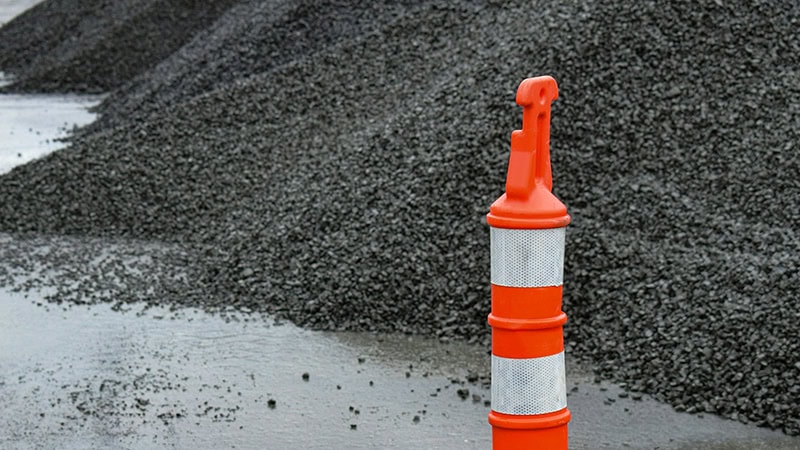
Deploying pile drivers across various job sites requires careful consideration of site accessibility, available space, and the speed at which equipment can be moved and installed.
Truck-mounted devices typically need more power, setup time, and maneuvering space, whereas handheld systems are more easily deployed in tight or remote structures, especially when driving sheet piles.
Recognizing these distinctions will enable you to align your equipment choices with the practical demands of modern construction logistics and crew capabilities.
Job Sites Where Portability Matters Most
Handheld pile drivers excel on urban, remote, or terrain-limited sites. They can move quickly, adapt to unpredictable soil, and allow crews to shift positions in minutes rather than hours. For more information on safety standards and regulations, visit OSHA.
A compact pile driver is often the most efficient choice for structures requiring frequent repositioning, such as small solar farms or fencing jobs.
Logistics and Crew Size Considerations
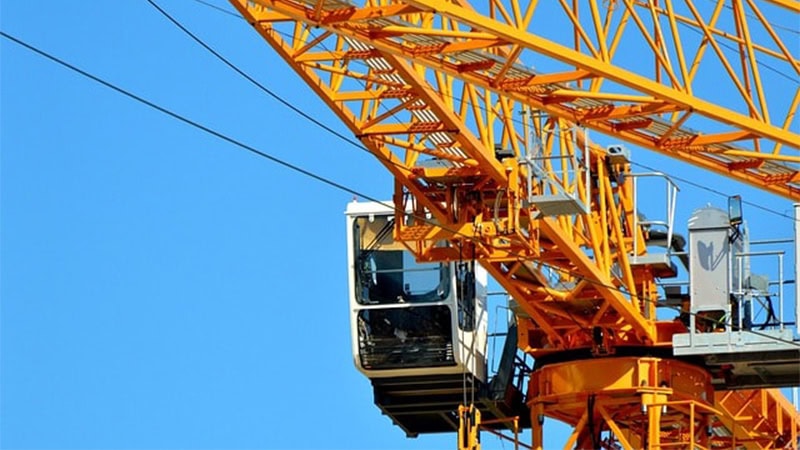
Truck-mounted hammers, while powerful, require larger staging areas and a coordinated team. Crane support is often needed to lift and align piles, increasing both crew size and setup time. The number of crew members required for truck-mounted systems is typically higher than for handheld systems.
Handheld systems, on the other hand, allow smaller teams to handle equipment without a crane, which saves time, reduces costs, and improves safety. Everstar’s stock is designed to be operated with minimal labor while still delivering consistent driving power.
Cost, Maintenance, and Ownership Factors

Budget-conscious contractors must weigh the equipment’s initial price and fuel, maintenance, and servicing demands over time against other types of gear. Everstar offers a range of products designed to meet different budget and performance needs.
Truck-mounted with larger pile driving hammers, hydraulic motors, and diesel power pack techniques, typically carry higher acquisition and operational costs. In contrast, handheld models are simpler to maintain and easier to transport, making them an affordable long-term investment.
With reliable hammer performance across diverse worksites, Everstar’s compact, low-maintenance appliances handle costs while delivering projects involving sheet piles or similar structures.
Evaluating Total Cost of Ownership
When evaluating a pile driver, price is only part of the equation. Factor in fuel consumption, labor hours, crew size, transport, and ongoing training for operators.
Due to their diesel hammer and other factors, truck-mounted piles can have higher total costs, while handheld pile drivers generally cost less to run their simpler power pack system and create fewer emissions, improving fresh air conditions on-site.
Additionally, these systems often require less maintenance and can increase productivity, further reducing overall operating expenses.
Maintenance and Operator Training Differences
Truck-mounted pile drivers require certified mechanics and sometimes factory-serviced inspections, especially for their hydraulic motors and diesel hammer pistons. Handheld pile drivers feature simpler systems with fewer components, making maintenance more manageable.
Proper maintenance is also essential for equipment used in pile extraction operations, ensuring reliable and efficient extraction when needed.
Everstar’s portable piles prioritize compact, low-maintenance designs that reduce downtime and maximize daily productivity.
Choosing the Right Pile Driver for Your Application
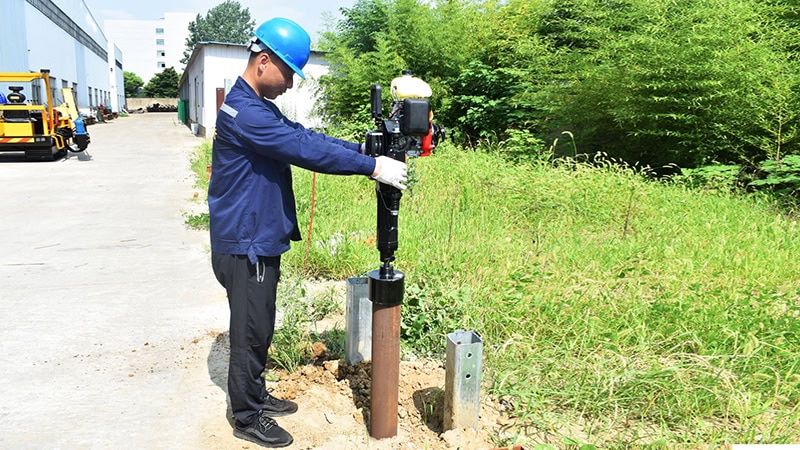
Selecting the right pile driver depends on project type, terrain condition, required volume, crew size, and project timeline.
Whether driving concrete or sheet piles, you must match the machine’s hammer force and power pack to the site’s needs. Everstar’s lineup of compact, fuel-efficient engines supports a variety of light- and mid-duty applications.
With options ranging from steam-compatible methods to modern hydraulic hammers, these models help contractors adapt quickly and maintain productivity across changing land conditions.
Certain pile drivers may be preferred for projects requiring low noise or minimal vibration, making them more suitable for sensitive environments or urban sites.
Application Fit Checklist
To choose the best pile driver hammers for your job, assess:
- Soil condition (soft, rocky, consistent)
- Project footprint (tight spaces vs. open highways)
- Access (urban vs. remote)
- Crew size and experience
- Timeline (fast-moving vs. long-term deployment)
When to Consider Equipment Flexibility Over Scale
Many contractors now prioritize versatility over pure size. A compact pile driver, specially to handle multiple hammer lengths and various materials, can drive unpredictable site conditions more efficiently than a larger, less mobile rig.
Everstar’s experience in construction shows that adaptable engines help contractors drive piles faster, with fewer delays caused by weather or access challenges.
FAQs – Choosing the Right Pile Driver
What are the different types of pile drivers?
They include portable or handheld, truck-mounted, and excavator hammers, with power sources ranging from steam and diesel hammers to modern hydraulic hammer setups.
What’s the main difference between a handheld pile driver and a truck-mounted option?
Handheld pile driving hammers are small, portable, and easy to use with minimal crew, while truck-mounted designs are larger, higher-capacity machines with vehicle-based deployment.
Which type of pile driver is better for solar farm construction?
A portable or handheld pile driver is more suitable in many cases, due to flexible positioning, reduced setup time, and lower fuel consumption.
Do truck-mounted machines require special licenses or operators?
Yes. Truck-mounted hammers typically need certified operators and sometimes commercial driving licenses for the vehicle itself.
Can a handheld pile driver be used for steel or concrete piles?
Yes, provided the piles are not excessively long or heavy. Otherwise, a truck-mounted or excavator-mounted solution may be needed.
What is another name for a pile driver?
Another name for a pile driver is a piling rig. You may also hear it called a hammer or pile-driving hammer. These terms all describe devices used to drive piles into the ground to support foundations and other structures.
In Summary: Choose Compact Piles for Flexibility
Choosing between handheld and truck-mounted pile drivers is about balancing power, mobility, cost, and crew requirements. Handheld options suit dynamic, flexible projects where quick transitions are needed, while truck-mounted engines are best for repetitive, high-volume jobs.
Everstar Machinery specializes in compact, efficient devices designed for global construction needs. These appliances combine high-performance hydraulic hammer technology with operator-friendly controls.
Before purchasing, always consider soil conditions, terrain, steel pile requirements, and how often you’ll need to reposition. For many customers, practicality outweighs sheer price and power.
Choosing the Right Pile Driver with Everstar Machinery
Contact Everstar Machinery today to explore your options, request our pile driver selection checklist, and discover how our compact pile driver systems can oversee your next project.